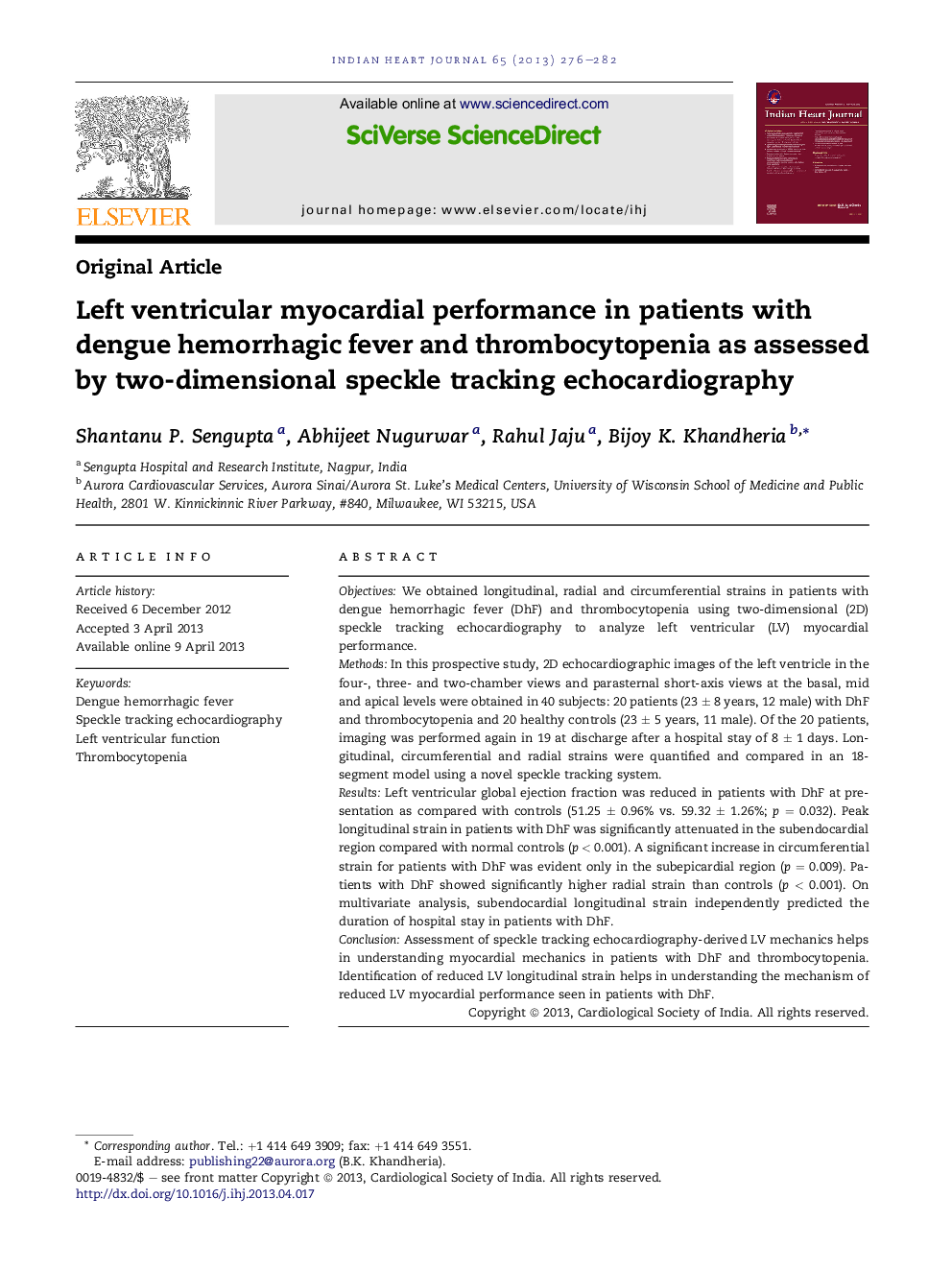| Article ID | Journal | Published Year | Pages | File Type |
|---|---|---|---|---|
| 2927819 | Indian Heart Journal | 2013 | 7 Pages |
ObjectivesWe obtained longitudinal, radial and circumferential strains in patients with dengue hemorrhagic fever (DhF) and thrombocytopenia using two-dimensional (2D) speckle tracking echocardiography to analyze left ventricular (LV) myocardial performance.MethodsIn this prospective study, 2D echocardiographic images of the left ventricle in the four-, three- and two-chamber views and parasternal short-axis views at the basal, mid and apical levels were obtained in 40 subjects: 20 patients (23 ± 8 years, 12 male) with DhF and thrombocytopenia and 20 healthy controls (23 ± 5 years, 11 male). Of the 20 patients, imaging was performed again in 19 at discharge after a hospital stay of 8 ± 1 days. Longitudinal, circumferential and radial strains were quantified and compared in an 18-segment model using a novel speckle tracking system.ResultsLeft ventricular global ejection fraction was reduced in patients with DhF at presentation as compared with controls (51.25 ± 0.96% vs. 59.32 ± 1.26%; p = 0.032). Peak longitudinal strain in patients with DhF was significantly attenuated in the subendocardial region compared with normal controls (p < 0.001). A significant increase in circumferential strain for patients with DhF was evident only in the subepicardial region (p = 0.009). Patients with DhF showed significantly higher radial strain than controls (p < 0.001). On multivariate analysis, subendocardial longitudinal strain independently predicted the duration of hospital stay in patients with DhF.ConclusionAssessment of speckle tracking echocardiography-derived LV mechanics helps in understanding myocardial mechanics in patients with DhF and thrombocytopenia. Identification of reduced LV longitudinal strain helps in understanding the mechanism of reduced LV myocardial performance seen in patients with DhF.
